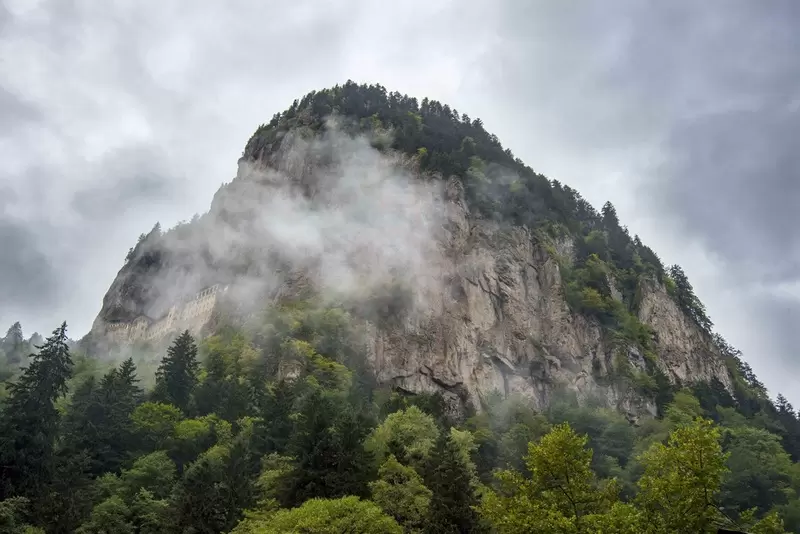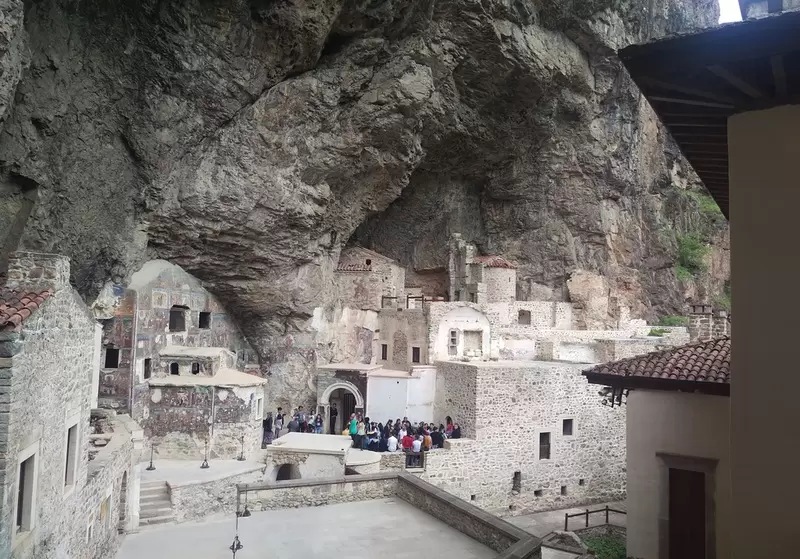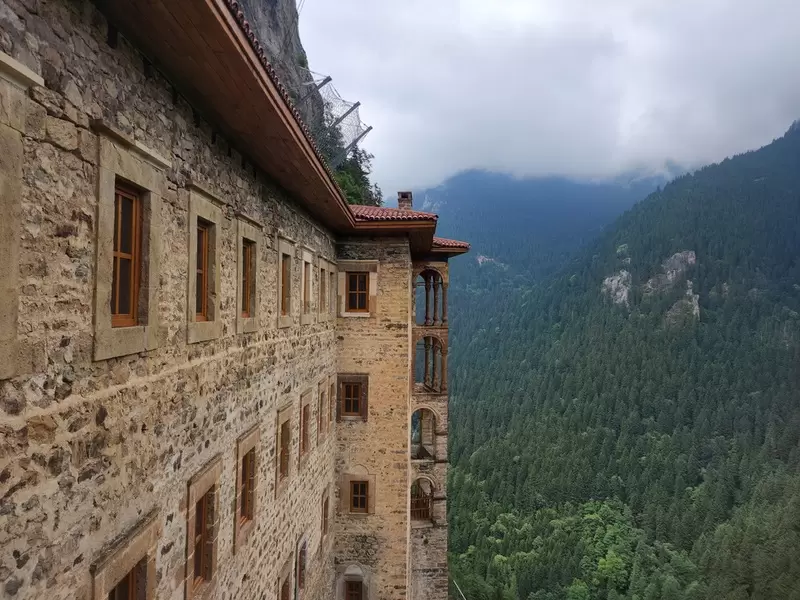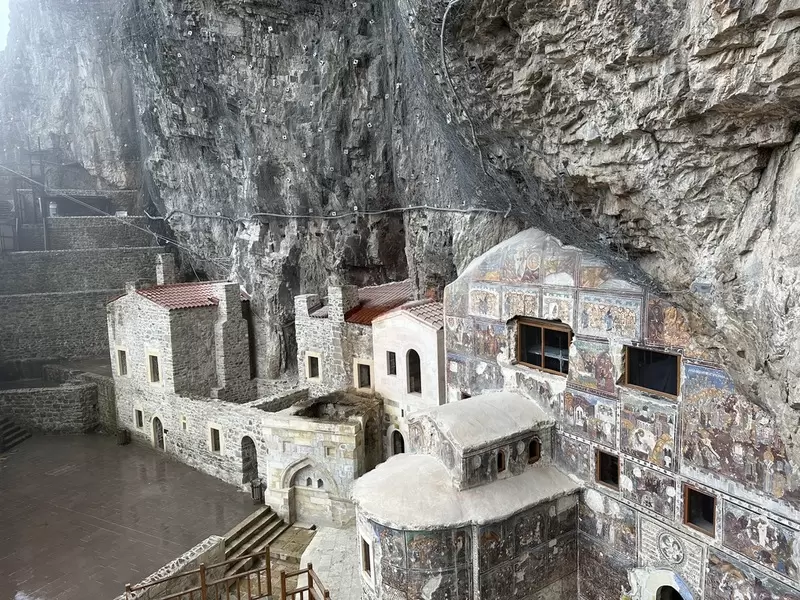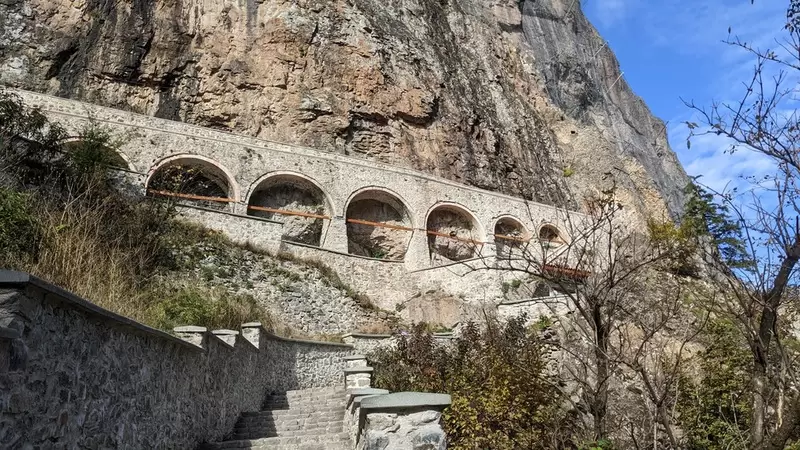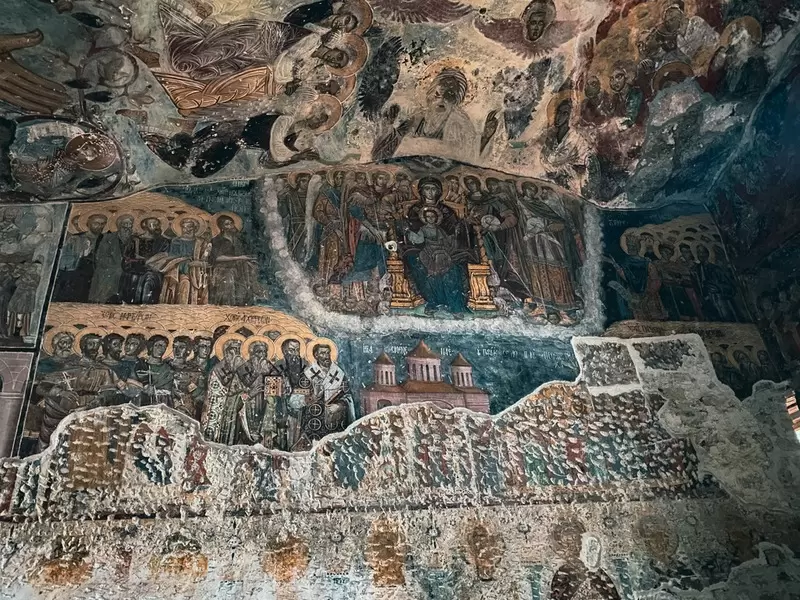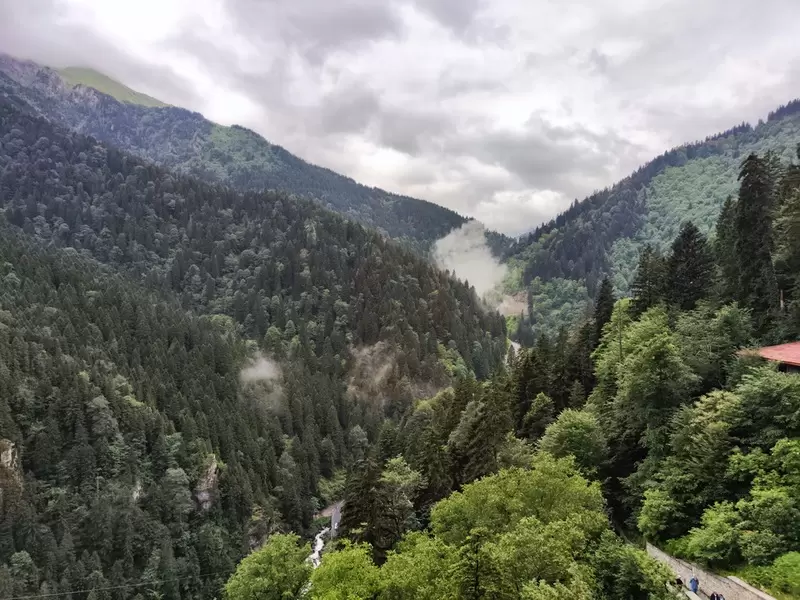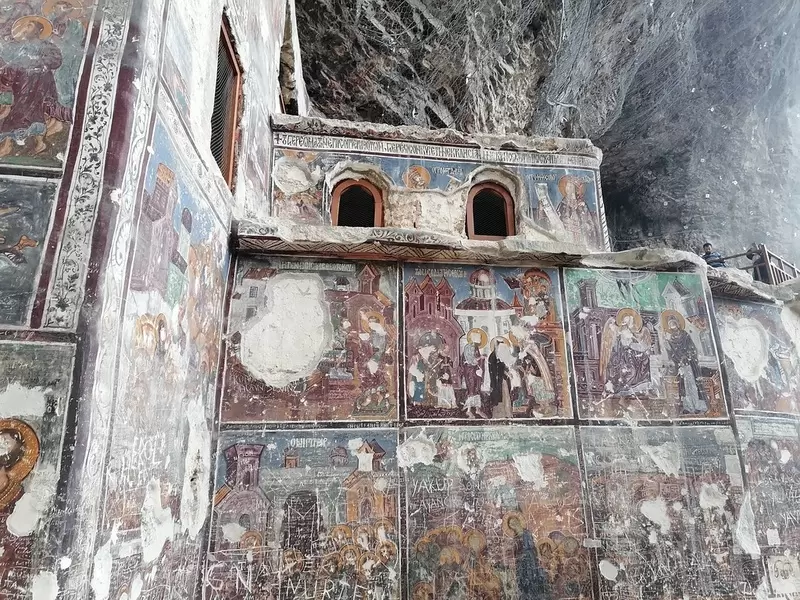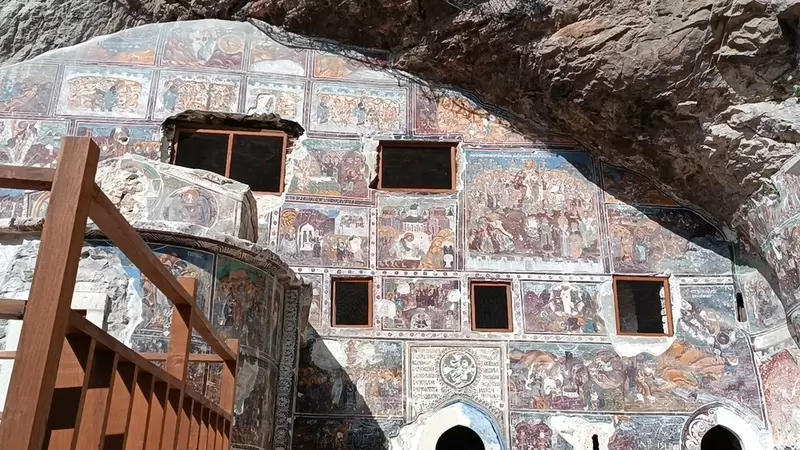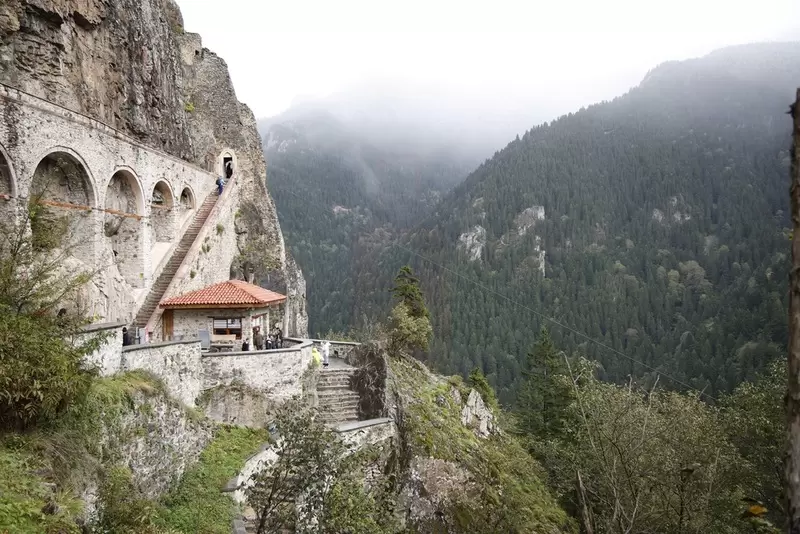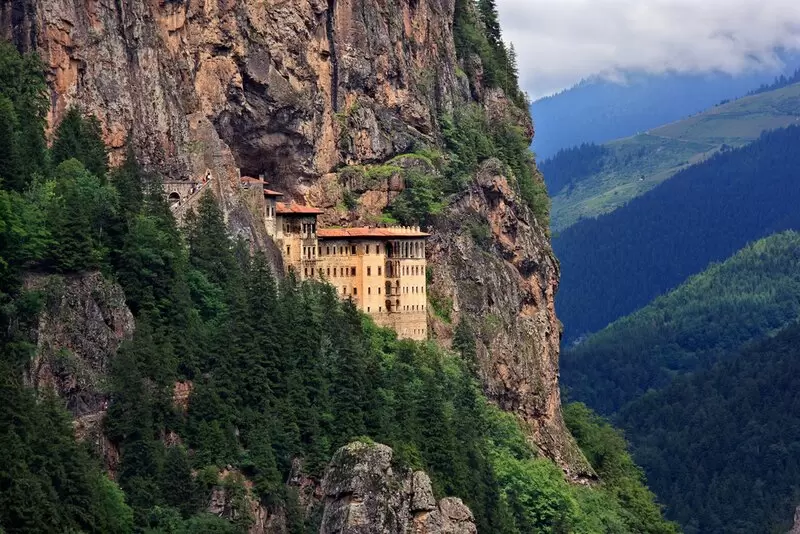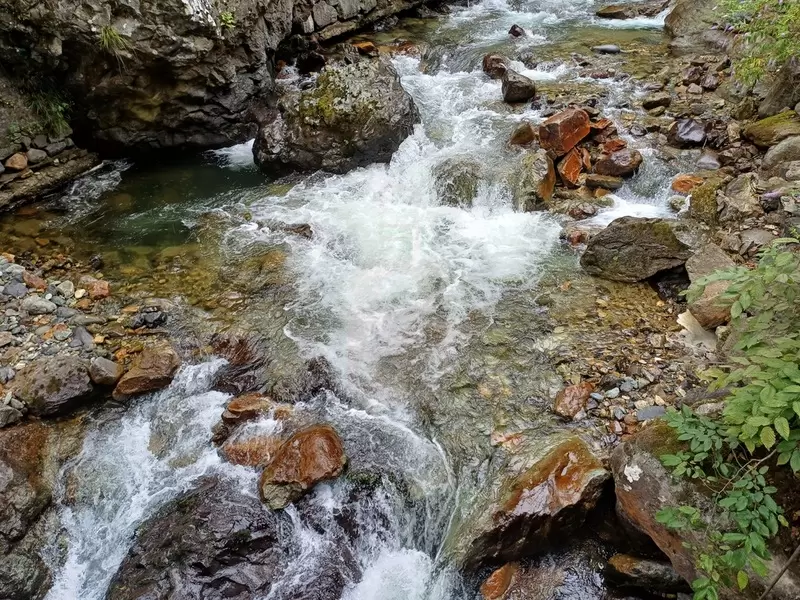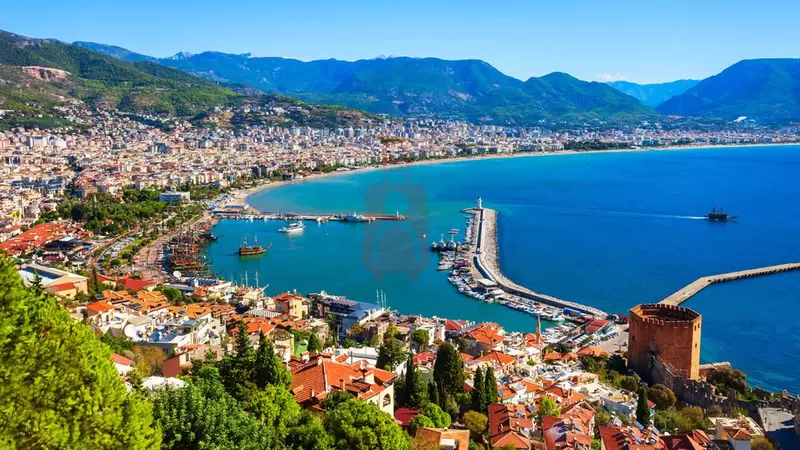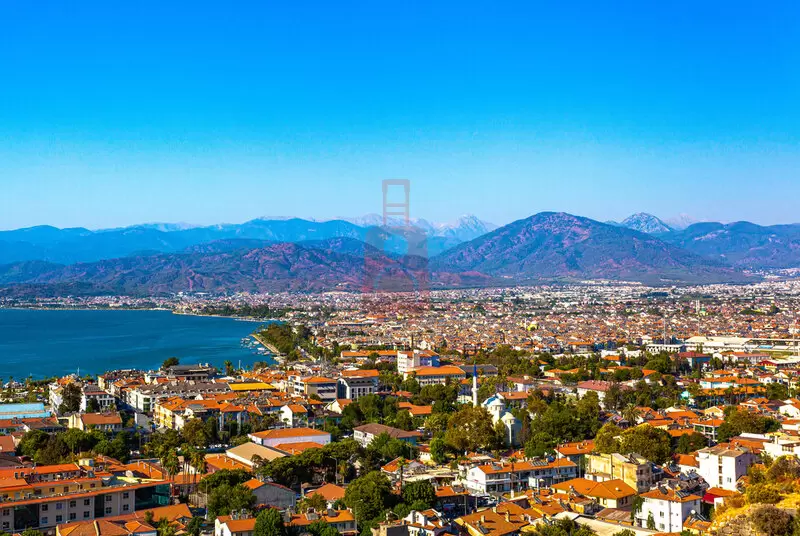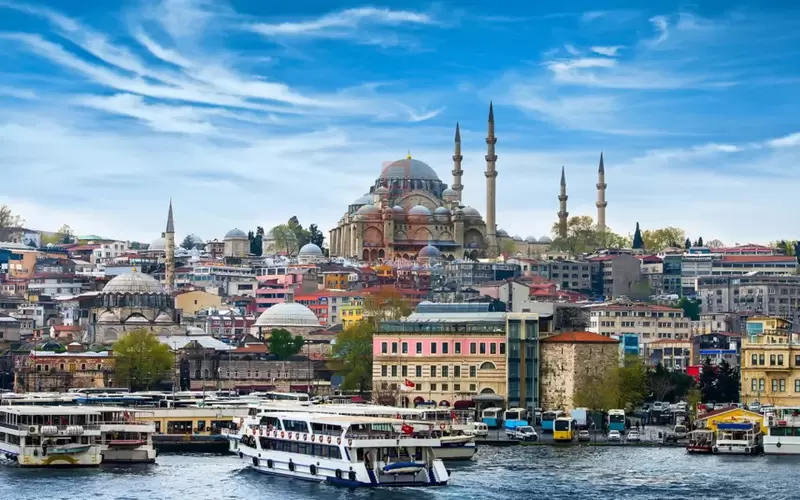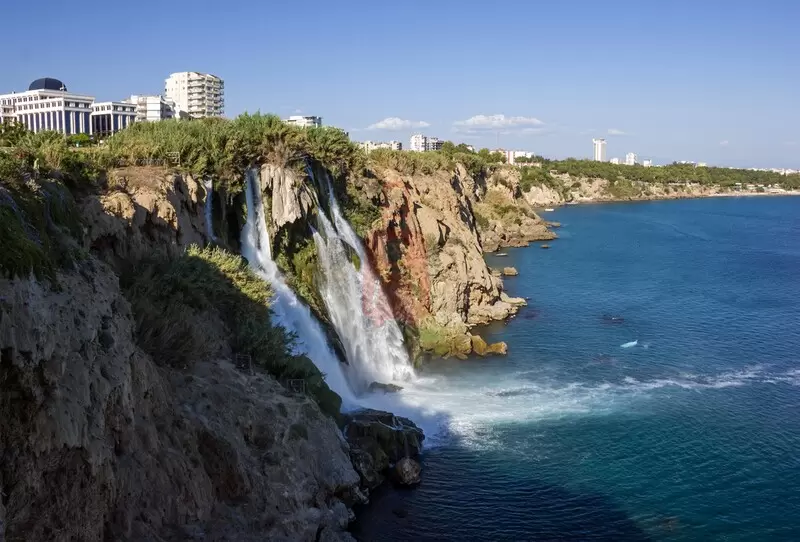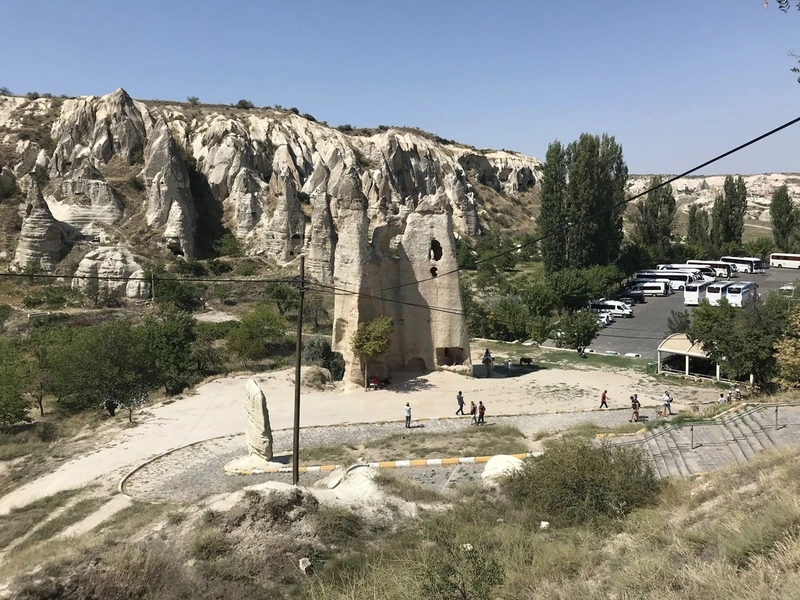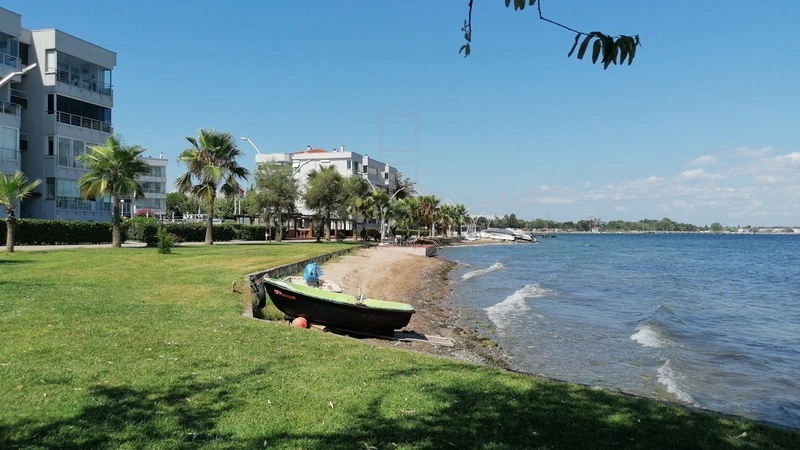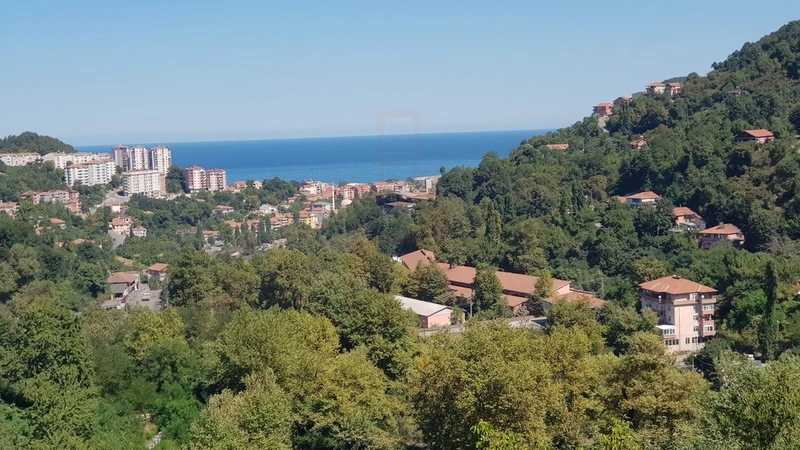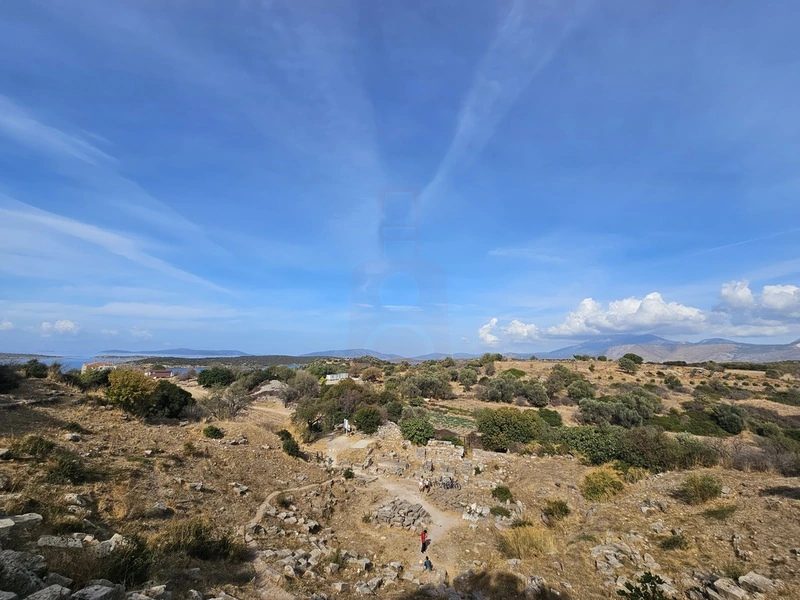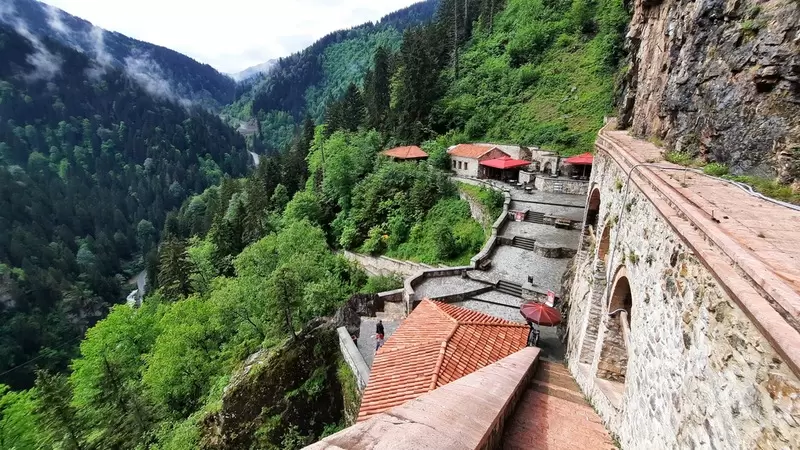
Sumela Monastery (Turkish: Sümela Manastırı) is a Greek Orthodox monastery located in the Pontic Mountains, in the province of Trabzon, Turkey. The monastery is built on a steep rock face overlooking the Altındere River, and is one of the most popular tourist destinations in Turkey. The monastery was founded in the 4th century AD, and was abandoned in the 1920s. In 1997, the monastery was restored and reopened to the public.
The Sumela Monastery, also known as the Monastery of the Virgin Mary, is a historic Greek Orthodox monastery located in the Macka district of Trabzon Province in northeastern Turkey. Here is some information about the Sumela Monastery:
1. History: The Sumela Monastery is believed to have been founded in the 4th century AD during the reign of the Byzantine Emperor Theodosius I. It is named after the icon of the Virgin Mary, which is said to have been painted by the Apostle Luke. Over the centuries, the monastery underwent several renovations and expansions.
2. Location: The monastery is situated on the steep cliffs of Mount Mela (also known as Karadağ) at an elevation of approximately 1,200 meters (3,900 feet) above sea level. It is nestled within a dense forest, offering a picturesque setting.
3. Architecture: The Sumela Monastery features a unique architectural style that combines Byzantine and Greek influences. The complex consists of several buildings, including the main church, chapels, monks' quarters, a library, kitchens, a guesthouse, and a sacred spring. The exterior of the monastery is adorned with frescoes, while the interior houses valuable religious artifacts and icons.
4. Cultural and Religious Significance: The Sumela Monastery holds great cultural and religious significance for both Orthodox Christians and the local population. It served as an important center of religious worship, pilgrimage, and education. The monastery attracted numerous visitors and pilgrims throughout history, who came to admire its spiritual ambiance and natural beauty.
5. Closure and Restoration: In 1923, following the population exchange between Greece and Turkey, the Sumela Monastery ceased its operations. It remained closed for several decades until restoration efforts began in the 1990s. The monastery was reopened to the public in 2010 after extensive restoration work.
6. Visiting the Monastery: The Sumela Monastery is open to visitors, allowing them to explore its architectural marvels and experience its serene atmosphere. Visitors can admire the stunning views of the surrounding landscape, walk through the monastery complex, and view the preserved frescoes and religious artifacts. It is advisable to check the official website or contact local tourism authorities for up-to-date information on visiting hours, admission fees, and any specific guidelines for visitors.
The Sumela Monastery stands as a testament to the region's rich historical and cultural heritage. Its architectural splendor and spiritual significance continue to captivate visitors from around the world.
